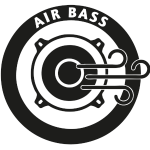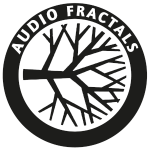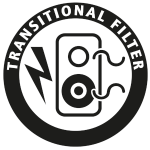Technologies
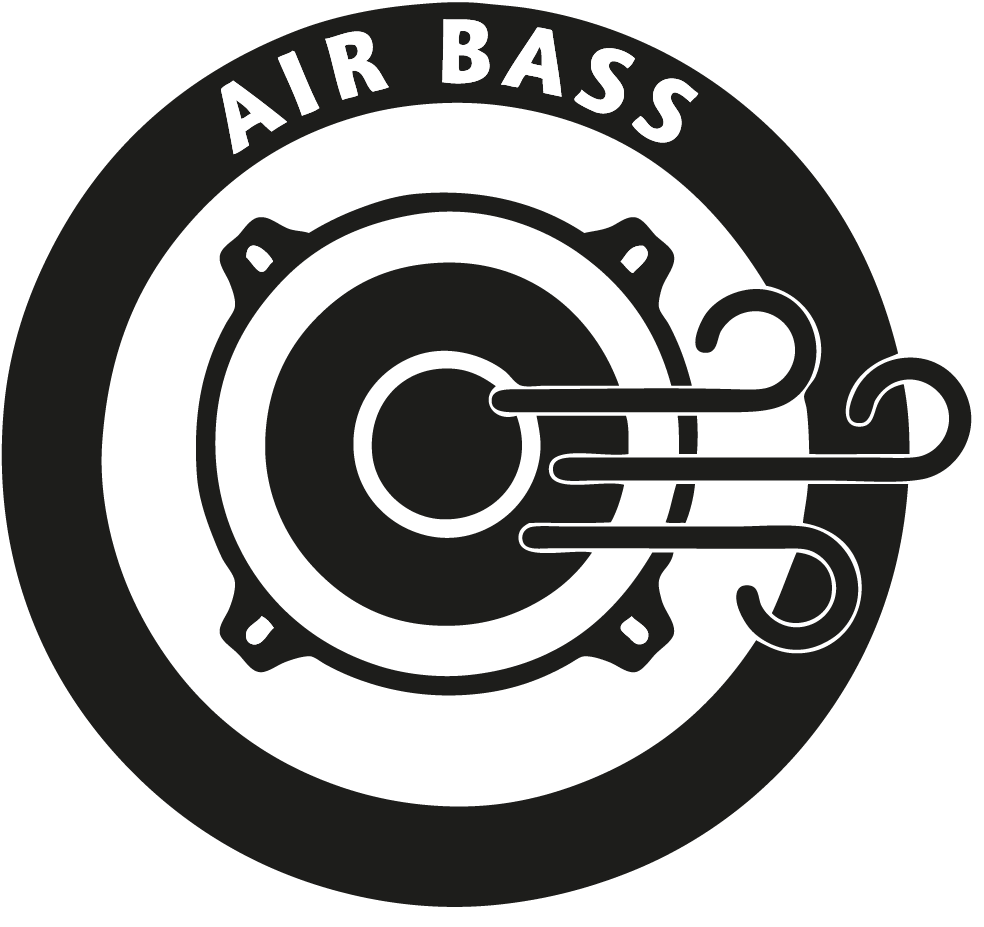
air bass system
The dynamic loudspeaker is the system used most often today. <In the 19th century, Werner von Siemens had made a suggestion that looks very similar to the modern loudspeaker but could not yet be realized with the means available at that time.
First Rice and Kellog of the General Electric Laboratories created the forefather of the dynamic loudspeaker in the 1920s.
The basically very simple construction consists of magnet, voice coil, diaphragm and suspension. At that time there were no strong permanent magnets, so a field coil was used, which was supplied with direct current.
In the course of the decades, ever stronger permanent magnets were developed.
A well-known material, which still has a good reputation today, is AlNiCo. An alloy of aluminium, nickel and cobalt. In the 70s cobalt became more and more expensive, among other things because it had to be obtained from areas in civil war in Africa. As an inexpensive alternative, the industry then switched to ferrites.
In recent times, neodymium was added, which is one of the strongest magnetic metalls of all but requires a different geometry due to the short magnectic field. The magnet problem can be considered solved today. With the FEM analysis we have a tool which helps to optimize the magnetic field in detail.
The actual topic is our innovative Air Bass System:
Thanks to many advances not only in the magnet system but also in the diaphragms, voice coils and suspensions, we now have excellent bass drivers. They have a long, linear excursion and are highly resilient.
As there is a growing desire for speakers to be more compact, the task is to get deep bass from relatively small cabinets.
One possibility here is a so-called bass reflex system.
Most modern loudspeakers use this system. A more or less optimized tube or shaft ventilates the speaker to the outside. The air load in the tube creates a resonance according to the Helmholz principle. This resonance extends the low frequency range downwards. Technically experienced people will understand that we no longer have a 2nd order system as with a closed cabinet but a 4th order system. Without much mathematics this means that the loudspeaker with reflex can produce deeper tones than a closed system with the same volume but the frequency response in the low bass is steeper, say below 40Hz, than in a closed cabinet.
This bandwidth limitation results in a worse impulse response. In terms of sound, this can lead to very low frequencies no longer being reproduced cleanly or, in the worst case, to the speaker tending to boom. A closed system can also be built to produce low bass but this will reduce efficiency and increase distortion. Many modern speakers don't even manage 84dB at 1W in a distance of 1 meter.
To make the newly added bass audible at all, very powerful amplifiers are needed. 2 x 500 W are not rare and that in good quality is big and expensive. Best sounding Class A amplifiers and tubes are usually not available. For a long time we have racked our brains whether there is a way out of this dilemma. One possibility is to set the reflex resonance below 20Hz.Since a person cannot hear anything below 20Hz, but only feel it, such as the "humble tone" of some huge church organs (12Hz to 16Hz), we would be off the hook. But this requires a greater air load than a conventional reflex tube can provide.
Through many experiments, calculations and measurements we first found out that the position of the reflex duct is not uncritical. It is best to dissipate the sound energy directly at the driver, where the sound energy is greatest, into the reflex duct. In the Air Bass System this happens directly under the woofer. 3 channels lead the sound downwards and lead into a slot visible from the front. This is sound path 1: the woofer is located in a pressure chamber (A). From there there are critically damped passages to chambers B, C and D. Finally, this delayed and mechanically filtered sound also flows into the 3 channels through calculated holes.
The very simplified drawing shows the ARA, our most elaborate loudspeaker we are currently developing. The drillings not only allow a pressure equalisation of the delayed sound of the woofer but are also dimensioned in such a way that no standing wave can form in the channels to the outside. A reflex channel (or tube) of conventional construction resonates not only at the desired low frequency but also at higher frequencies. There is even an instrument based on this principle: The didgeridoo. "The didgeridoo is a wind instrument from the family of aerophones, rich in overtones, based on the sound generation principle of the upholstered pipe and is considered a traditional musical instrument of the North Australian Aborigines ".(Source: Wikipedia). Well, we do not want to build a musical instrument, do we? So we kill two birds with one stone, brilliant!
If we think further, the question arises as to which frequency we should now set this newly gained, very low frequency. The answer is: to the open air natural resonance of the woofer. In the case of the ARA this is 18Hz and results from the mass of the moving parts (diaphragm and coil) and the flexibility (or stiffness) of the suspension (spider and surround). This is where the efficiency of the Air Bass principle is at its highest and limits the woofer's excursion. By a clever design this effect can be extended almost up to 50Hz. Very deep tones almost only come out of the slot and the travel of the woofer below 50Hz is more and more limited by the high air load.
Hence the name Air Bass. The deep bass is mainly produced from air, to put it simply. Since the law of "less excursion, less distortion" applies to dynamic speakers, the low bass is reproduced much cleaner than usual. The wide bandwidth down to below 20Hz results in a clean impulse response. This can be proven with measurements in the time domain (e.g. waterfall diagram).
Quote test report of the BEO LX in LP 1-2019 : " The waterfall diagram shows no long after-shocks, not even at the lower measurement limit."

Hyper Balanced
The dynamic loudspeaker is the system used most often today. <In the 19th century, Werner von Siemens had made a suggestion that looks very similar to the modern loudspeaker but could not yet be realized with the means available at that time.
First Rice and Kellog of the General Electric Laboratories created the forefather of the dynamic loudspeaker in the 1920s.
The basically very simple construction consists of magnet, voice coil, diaphragm and suspension. At that time there were no strong permanent magnets, so a field coil was used, which was supplied with direct current.
In the course of the decades, ever stronger permanent magnets were developed.
A well-known material, which still has a good reputation today, is AlNiCo. An alloy of aluminium, nickel and cobalt. In the 70s cobalt became more and more expensive, among other things because it had to be obtained from areas in civil war in Africa. As an inexpensive alternative, the industry then switched to ferrites.
In recent times, neodymium was added, which is one of the strongest magnetic metalls of all but requires a different geometry due to the short magnectic field. The magnet problem can be considered solved today. With the FEM analysis we have a tool which helps to optimize the magnetic field in detail.
The actual topic is our innovative Air Bass System:
Thanks to many advances not only in the magnet system but also in the diaphragms, voice coils and suspensions, we now have excellent bass drivers. They have a long, linear excursion and are highly resilient.
As there is a growing desire for speakers to be more compact, the task is to get deep bass from relatively small cabinets.
One possibility here is a so-called bass reflex system.
Most modern loudspeakers use this system. A more or less optimized tube or shaft ventilates the speaker to the outside. The air load in the tube creates a resonance according to the Helmholz principle. This resonance extends the low frequency range downwards. Technically experienced people will understand that we no longer have a 2nd order system as with a closed cabinet but a 4th order system. Without much mathematics this means that the loudspeaker with reflex can produce deeper tones than a closed system with the same volume but the frequency response in the low bass is steeper, say below 40Hz, than in a closed cabinet.
This bandwidth limitation results in a worse impulse response. In terms of sound, this can lead to very low frequencies no longer being reproduced cleanly or, in the worst case, to the speaker tending to boom. A closed system can also be built to produce low bass but this will reduce efficiency and increase distortion. Many modern speakers don't even manage 84dB at 1W in a distance of 1 meter.
To make the newly added bass audible at all, very powerful amplifiers are needed. 2 x 500 W are not rare and that in good quality is big and expensive. Best sounding Class A amplifiers and tubes are usually not available. For a long time we have racked our brains whether there is a way out of this dilemma. One possibility is to set the reflex resonance below 20Hz.Since a person cannot hear anything below 20Hz, but only feel it, such as the "humble tone" of some huge church organs (12Hz to 16Hz), we would be off the hook. But this requires a greater air load than a conventional reflex tube can provide.
Through many experiments, calculations and measurements we first found out that the position of the reflex duct is not uncritical. It is best to dissipate the sound energy directly at the driver, where the sound energy is greatest, into the reflex duct. In the Air Bass System this happens directly under the woofer. 3 channels lead the sound downwards and lead into a slot visible from the front. This is sound path 1: the woofer is located in a pressure chamber (A). From there there are critically damped passages to chambers B, C and D. Finally, this delayed and mechanically filtered sound also flows into the 3 channels through calculated holes.
The very simplified drawing shows the ARA, our most elaborate loudspeaker we are currently developing. The drillings not only allow a pressure equalisation of the delayed sound of the woofer but are also dimensioned in such a way that no standing wave can form in the channels to the outside. A reflex channel (or tube) of conventional construction resonates not only at the desired low frequency but also at higher frequencies. There is even an instrument based on this principle: The didgeridoo. "The didgeridoo is a wind instrument from the family of aerophones, rich in overtones, based on the sound generation principle of the upholstered pipe and is considered a traditional musical instrument of the North Australian Aborigines ".(Source: Wikipedia). Well, we do not want to build a musical instrument, do we? So we kill two birds with one stone, brilliant!
If we think further, the question arises as to which frequency we should now set this newly gained, very low frequency. The answer is: to the open air natural resonance of the woofer. In the case of the ARA this is 18Hz and results from the mass of the moving parts (diaphragm and coil) and the flexibility (or stiffness) of the suspension (spider and surround). This is where the efficiency of the Air Bass principle is at its highest and limits the woofer's excursion. By a clever design this effect can be extended almost up to 50Hz. Very deep tones almost only come out of the slot and the travel of the woofer below 50Hz is more and more limited by the high air load.
Hence the name Air Bass. The deep bass is mainly produced from air, to put it simply. Since the law of "less excursion, less distortion" applies to dynamic speakers, the low bass is reproduced much cleaner than usual. The wide bandwidth down to below 20Hz results in a clean impulse response. This can be proven with measurements in the time domain (e.g. waterfall diagram).
Quote test report of the BEO LX in LP 1-2019 : " The waterfall diagram shows no long after-shocks, not even at the lower measurement limit."

current conveyor
The dynamic loudspeaker is the system used most often today. <In the 19th century, Werner von Siemens had made a suggestion that looks very similar to the modern loudspeaker but could not yet be realized with the means available at that time.
First Rice and Kellog of the General Electric Laboratories created the forefather of the dynamic loudspeaker in the 1920s.
The basically very simple construction consists of magnet, voice coil, diaphragm and suspension. At that time there were no strong permanent magnets, so a field coil was used, which was supplied with direct current.
In the course of the decades, ever stronger permanent magnets were developed.
A well-known material, which still has a good reputation today, is AlNiCo. An alloy of aluminium, nickel and cobalt. In the 70s cobalt became more and more expensive, among other things because it had to be obtained from areas in civil war in Africa. As an inexpensive alternative, the industry then switched to ferrites.
In recent times, neodymium was added, which is one of the strongest magnetic metalls of all but requires a different geometry due to the short magnectic field. The magnet problem can be considered solved today. With the FEM analysis we have a tool which helps to optimize the magnetic field in detail.
The actual topic is our innovative Air Bass System:
Thanks to many advances not only in the magnet system but also in the diaphragms, voice coils and suspensions, we now have excellent bass drivers. They have a long, linear excursion and are highly resilient.
As there is a growing desire for speakers to be more compact, the task is to get deep bass from relatively small cabinets.
One possibility here is a so-called bass reflex system.
Most modern loudspeakers use this system. A more or less optimized tube or shaft ventilates the speaker to the outside. The air load in the tube creates a resonance according to the Helmholz principle. This resonance extends the low frequency range downwards. Technically experienced people will understand that we no longer have a 2nd order system as with a closed cabinet but a 4th order system. Without much mathematics this means that the loudspeaker with reflex can produce deeper tones than a closed system with the same volume but the frequency response in the low bass is steeper, say below 40Hz, than in a closed cabinet.
This bandwidth limitation results in a worse impulse response. In terms of sound, this can lead to very low frequencies no longer being reproduced cleanly or, in the worst case, to the speaker tending to boom. A closed system can also be built to produce low bass but this will reduce efficiency and increase distortion. Many modern speakers don't even manage 84dB at 1W in a distance of 1 meter.
To make the newly added bass audible at all, very powerful amplifiers are needed. 2 x 500 W are not rare and that in good quality is big and expensive. Best sounding Class A amplifiers and tubes are usually not available. For a long time we have racked our brains whether there is a way out of this dilemma. One possibility is to set the reflex resonance below 20Hz.Since a person cannot hear anything below 20Hz, but only feel it, such as the "humble tone" of some huge church organs (12Hz to 16Hz), we would be off the hook. But this requires a greater air load than a conventional reflex tube can provide.
Through many experiments, calculations and measurements we first found out that the position of the reflex duct is not uncritical. It is best to dissipate the sound energy directly at the driver, where the sound energy is greatest, into the reflex duct. In the Air Bass System this happens directly under the woofer. 3 channels lead the sound downwards and lead into a slot visible from the front. This is sound path 1: the woofer is located in a pressure chamber (A). From there there are critically damped passages to chambers B, C and D. Finally, this delayed and mechanically filtered sound also flows into the 3 channels through calculated holes.
The very simplified drawing shows the ARA, our most elaborate loudspeaker we are currently developing. The drillings not only allow a pressure equalisation of the delayed sound of the woofer but are also dimensioned in such a way that no standing wave can form in the channels to the outside. A reflex channel (or tube) of conventional construction resonates not only at the desired low frequency but also at higher frequencies. There is even an instrument based on this principle: The didgeridoo. "The didgeridoo is a wind instrument from the family of aerophones, rich in overtones, based on the sound generation principle of the upholstered pipe and is considered a traditional musical instrument of the North Australian Aborigines ".(Source: Wikipedia). Well, we do not want to build a musical instrument, do we? So we kill two birds with one stone, brilliant!
If we think further, the question arises as to which frequency we should now set this newly gained, very low frequency. The answer is: to the open air natural resonance of the woofer. In the case of the ARA this is 18Hz and results from the mass of the moving parts (diaphragm and coil) and the flexibility (or stiffness) of the suspension (spider and surround). This is where the efficiency of the Air Bass principle is at its highest and limits the woofer's excursion. By a clever design this effect can be extended almost up to 50Hz. Very deep tones almost only come out of the slot and the travel of the woofer below 50Hz is more and more limited by the high air load.
Hence the name Air Bass. The deep bass is mainly produced from air, to put it simply. Since the law of "less excursion, less distortion" applies to dynamic speakers, the low bass is reproduced much cleaner than usual. The wide bandwidth down to below 20Hz results in a clean impulse response. This can be proven with measurements in the time domain (e.g. waterfall diagram).
Quote test report of the BEO LX in LP 1-2019 : " The waterfall diagram shows no long after-shocks, not even at the lower measurement limit."

digital reality
What does Digital do wrong? Why is there a never ending stream of elaborate turntables, tonearms and systems? Why this cult around tape machines, tuners, tube amplifiers and antique speakers? Some listeners even believe that digital music playback is bad for their hearing, even harmful to their health. That's where esoteric accessories and cables worth the value of a car come in handy.
Nearly all modern productions (of course there are exceptions like direct cutting of LPs and analog tape recordings, mostly with audiophile music but not soo great musicians) are recorded and mixed digitally.
What is the value of pressing something like this on a record and then saying: The record sounds better?
We can only imagine that we have become accustomed to the artifacts of record playback or that their disadvantages such as compression and reduced crosstalk attenuation are subjectively perceived as louder and more spatial.
The deep rumbling may have something magical about it and the hissing and crackling may remind us of a campfire in our youth. Now you will be surprised that we too are fans of the vinyl record and use one or the other tube amp. Something so physical, which also still looks so good and can be operated so wonderfully, is just cool.
Also the vinyl record does not stand in the way of music enjoyment and it is always exciting to hear a disc from the past in a completely new way due to technical advancements that are still taking place. However, it is our firm conviction that digital brings it closer to the original. But it is not, as claimed, just a push of a button like a miracle pill and then the problems of speakers and space are gone. It is a bit more complicated and we want to describe this in the following in as understandable terms as possible.
You don't necessarily have to deal with it in depth. Our technology is designed to give you maximum benefit with minimum effort. Then you can dedicate yourself completely to your beloved music. Every new technology that is sufficiently mature at first seems like magic. And that this is done very consequently nowadays is shown by the software Acourate.
With this software, classic passive loudspeakers can be digitally corrected and completely digital solutions can be built. These are often preferable to analogue solutions in terms of comfort and simplicity - example: The software "Roon". In combination with high-resolution streaming, you have access to the worldwide music market without borders in the absolutely best available quality.
How to get there is well explained on the website http://www.digitalloudspeaker.com . We have made the attempt. We built our top model ARA based on a digital crossover with linear-phase in Acourate, with the same parameters as in the analogue, passive model. The result was stunning. Only live unplugged is even better. Even we had never heard music like this before. It is the limit of what is technically possible. We did it. And you can listen to it yourself by appointment! But beware: This will catapult you into a new world. It's addictive!
And to answer the initial question: Nothing! Digital is the royal road!
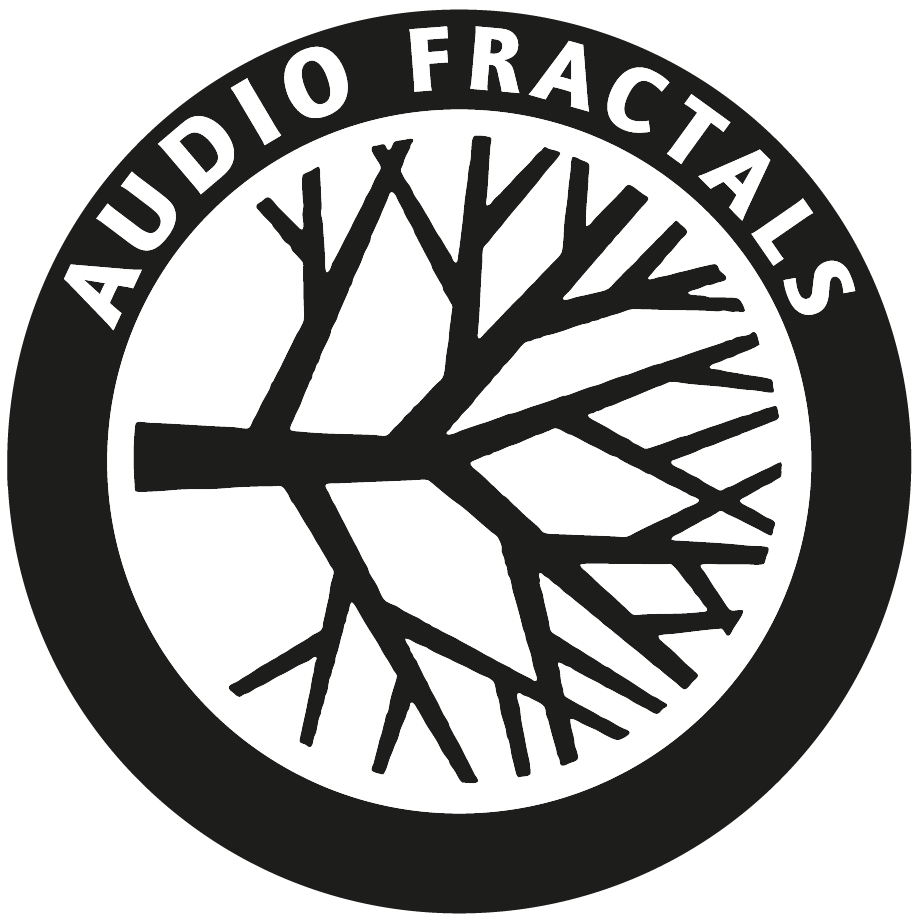
Fractales audio
Wait a minute!
How can you write about something that you don't even really understand yourself yet?
Is it charlatanry or snake oil, which in its original substance from China actually works well against all kinds of things but later became the epitome of the trick deception. The Wild West sends its regards.
Now we will venture a hypothesis:
Not only by coincidence, but also by innumerable experiments and calculations we have discovered a connection, which makes the tonal preparation of a canned food (recording) by a reproducing apparatus (HiFi system) more palatable and accessible. It simply sounds more natural!
The first shock came when I decided to find out why the acoustic center is rarely in the middle, even though both channels of the system were adjusted to the same volume with the help of measurement technology. Damn it, on most Steely Dan tracks Donald Fagen's voice comes a bit from the left. If I then adjusted the balance control so that Donald's voice came from the middle, on many other recordings it didn't work anymore and the voice of e.g. Billy Holiday came too far from the right !
So I got a LED VU meter to find out if it is really true on some recordings that one channel plays louder. This is true, but the real surprise came through the back door in a completely different form: With the VU meter in the signal path it sounded better, although an additional cable plus 2 jacks per channel are added, and the brass jacks for looping through on the VU meter are really of frightening primitiveness.
This is not only afainst the first mantra of the high ender: As few material transitions as possible! But also against the second: Please no magnetic nickel layer! I then remembered an experiment I did. I cut up a loudspeaker cable and inserted areas where I cast the cable into small concrete blocks. That doesn't work well without soldering, so here again we violate the law of minimal transitions. It sounded really good but I didn't pursue this any further because of the effort.
I called it Fractal Cable, without knowing exactly what it was. The further I went, the more interesting it became. I had known for some time the work of the mathematician Benoit Mandelbrot. He discovered the Mandelbrot set named after him, also known as the "Apfelmännchen" and coined the term fractal in 1975. This is an object that consists of several scaled-down copies of itself. The only thing we need to know right now is that any set with a non-integer dimension is a fractal. Fractals can have integer dimensions, but these are rare exceptions. The fractal consists of a number of reduced copies of itself, and if the reduction factor is the same for all copies, then we use the similarity dimension. This is called self-similarity. This rarely occurs in nature in this rigor. Here statistics and stochastics matter more. The branch of a tree looks similar to the tree, but is not completely identical to it in form. This is where our symbol for audio fractals comes from. A nice example for a fractal in nature is Romanesco cauliflower or the coastline of Norway. It is not possible to determine the lengt of the coastline of Norway exactly, because it always shows new details in a small scale. Another example, like the mirror in the mirror, that infinity is mathematically not really a problem.
How does it go on, dear reader ? Like in pulp fiction: Do the prince and the princess fight each other? At Suesskind we represent the motto: "It's for Live"
How does it go on, dear reader ? Like in pulp fiction: Do the prince and the princess fight each other? At Suesskind we represent the motto: "It's for Live"
Most of our products can be updated and upgraded. Like the example of a BEO that I converted to BEO LX. We were missing the right resistor value in the high frequency range so we used 2 resistors in series to get the right value. We split the values about 6 to 4 with what we had available. The sonic effect really knocked my socks off. More dynamics, more transparency, huge stage - We had probably by chance (God is chance, Heiner Basil Martion) hit the golden ratio: 61 to 39. This we then extended to coils and capacitors.
Where we used a 6.8uF capacitor so far, we took 3 capacitors in parallel, whose 2 largest values we split approximately in the golden ratio. That would be about 3.9uF, 2.2uF and 0.68uF, in the sum 6.78uF. The value of 0.68uF is called residual value.
Mathematically talented people can try to calculate an even more favourable splitting, let's say with 4 values, so that the smallest value is also in relation to the golden ratio of the next bigger value. I should point out that capacitors are not available in all values, mostly it is an E12 or E24 series. Also it is not yet clear whether the golden ratio is the optimal one for the sound. There are also other ratios that occur in nature, such as the Fibonacci series. There the next number is always the sum of the 2 previous numbers: 0112358111930 and so on. This can be well observed in snail shells and shells of some marine animals. A huge playground opens up here, so what has been said so far must probably remain a work in progress forever. Nevertheless we are making good progress. Another area of our research deals with mechanical vibrations in passive components, and how this affects sound.
Some time ago I was invited to the Klangmeister conference in Lemgo. Mr. Fricke from Ecouton has created a forum there where competitors are allowed to present themselves. A noble enterprise. I brought many coils and capacitors with me. Over a high loadable resistor and a 100W amplifier I controlled the components, without loudspeakers. With an ear trumpet for midwives one could then "listen" to the components. Some of the capacitors and coils were so pathological that they played cheerfully even without a tube. The best specimens were mostly potted and in metal, plastic or paper containers. But even the best ones were not completely free of artifacts. Here it may be an advantage to divide a large component value into smaller ones that have a favourable ratio. A big voice will then become many small ones, and hopefully that will be less annoying. So we can state that passive components can be divided into smaller values, which in the sum result in the desired value. You can divide these values so that they result in a certain numerical ratio, e.g. the golden ratio or a Fibonacci series. There may be an even more advantageous division. The components can be connected in parallel or in series. There is also the possibility of parallel-series connection.
We call a series connection of similar fragments Serial Fractalization and a parallel connection Parallel Fractalization. Both can be combined.

Omni Shape
At least since Harry F. Olsen published his groundbreaking article in the AES Journal in 1950, we have known that the shape of the cabinet can have a drastic influence on the frequency response of a loudspeaker. Diffraction and refraction cause both local amplification and attenuation through interference. The optimal shapes are rounded to the extreme of the sphere or have highly phased baffles. This is not always aesthetically pleasing or desirable and can be expensive to produce. A new technology was developed by me and introduced with the Sonics loudspeakers, which had as a target the elimination of the worst defects caused by angular enclosures. First of all, we have to consider which errors can be corrected at all by passive means.
If the problem is a superelevation, the solution is relatively simple. There is a passive filter which eliminates the superelevation, because this interference is minimal phased. It is more difficult with holes in the frequency response. We could passively add no energy but only attenuate it.
Also, there are uncorrectable errors when it comes to cancellation. Even if I pump energy into this interference with Active DSP, it will only get worse. We found that besides chamfering or rounding, an asymmetrical position of the driver, especially in the high frequencies, helps a lot. To determine this beforehand we use a simulation tool that allows us to move the tweeter virtually until an optimal result is achieved. We pay the most attention to avoiding holes and don't care so much about exaggerations, since they can be corrected passively.
As a result we are getting closer and closer to our goal that all Suesskind loudspeakers sound " the same " (by this I mean neutral, natural, high resolution, 3 dimensional and dynamic). Of course a small speaker has limits in bass and achievable volume. Psychoacoustic helps that the ear perceives holes in the frequency response less than peaks. The result is a "Joachim Gerhard Signature Sound" that many of our customers have been able to identify for decades. Large and well focused in the image, completely detached from the loudspeaker, lively and dynamic, high resolution without annoying, natural, homogeneous and balanced, free from discolouration and distortion. Enjoy the ride.
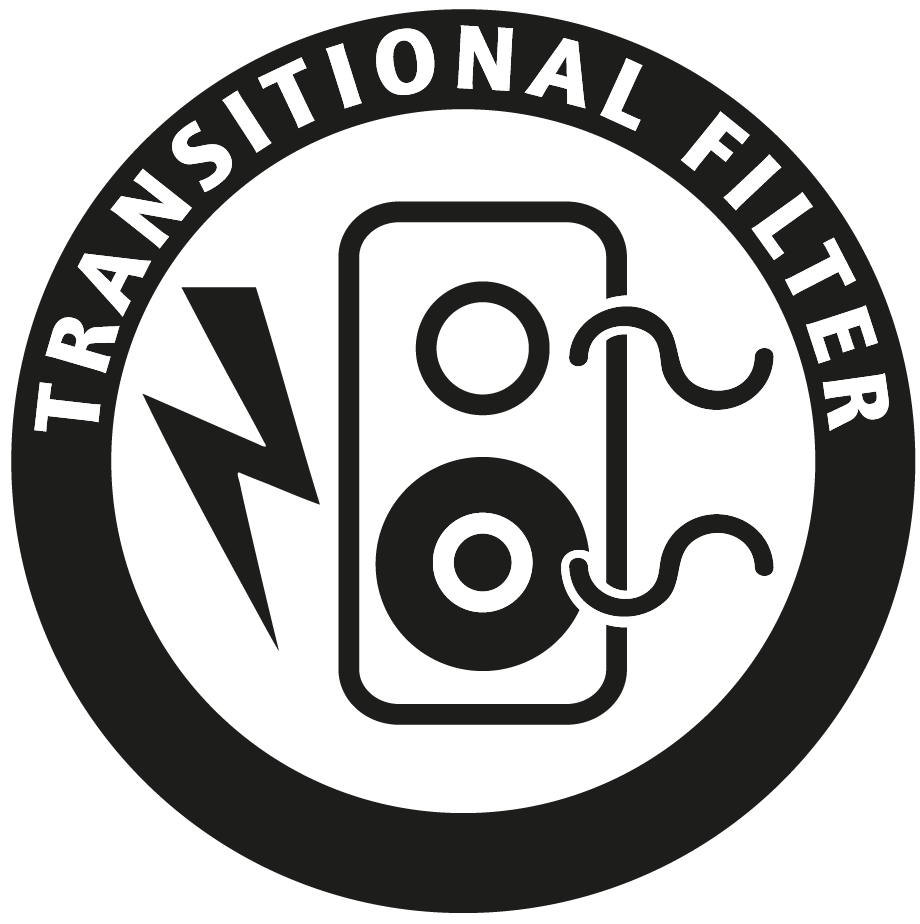
Transitional Filter
Apart from a few good broadband drivers and full-range electrostatics, we developers have no choice but to split the spectrum into at least 2 parts. A typical 2-way speaker then has a low-midrange driver that goes up to 3kHz and then a tweeter takes over. The world is full of such constructions and the sound ranges from good to horrible. Here we can already learn that even such a simple task confronts us with almost impossible tasks. If it were simple and predictable at least the pathological variants would have to be extinct. The signal simply can't be separated so easily that it doesn't get damaged. Making two things seem like one requires more than magic, even with a veritable miracle we won't get anywhere. It should work in everyday life and not only in a state of highest enlightenment. Faith helps, but only if we put the money on the table and free ourselves from what we actually get.
That is the high-end paradox. More money doesn't equal more sound, at least not as a rule. It's a bit like love for money. A nice illusion, sure, but nothing more. A stale taste remains. Something is not real, but the real is what we want. Intelligence costs nothing, but us sages had to give up a lot at a young age. Learning was the order of the day, not partying.
"The clever doubt, the stupid believe in themselves." - Charles Bukovsky.
I don't want to claim that the Transitional Filters we created solve all the problems of a passive crossover and that the competition is too stupid to understand that. On the contrary, we know about the disadvantages, but due to the chosen structure we can minimize them in a way that they are hardly noticeable. So we fly under the radar, almost unnoticed.So this requires not only the knowledge of a good engineer but also the acceptance that hearing is largely subjective and that some things disturb more than others. So where do we get the arrogance that our solution is the best?
Well, the best is relative, but what do you say to the fact that in my 40 years of professional life I have been to at least 300 trade fairs at home and abroad, where I have repeatedly succeeded in taking first places in terms of sound under sometimes extremely difficult conditions.
I never hid under such statements, like that the room is acoustically bad, that the current is not constant and what other adverse conditions there were. The competition had the same problems.
But now once again to the Transitional Filter! What exactly is that? First of all we have observed that textbook filters are not a good option. In the simplest case of a 2-way box the drivers are neither coincident nor coaxial. But for now let's leave out coax systems, which have their own problems.
I never hid under such statements, like that the room is acoustically bad, that the current is not constant and what other adverse conditions there were. The competition had the same problems.
Usually tweeter and woofer are vertically offset and the signal from the tweeter reaches the ear a bit earlier because the voice coil of the bass is offset backwards by the membrane depth. First we developed a technology that can compensate for a depth offset of up to 34mm. This is sufficient for most cases when the cone depth of the bass is not more than 34mm. If this offset is not enough, the speaker can still be angled backwards. With our BEO, for example, this is 7 degrees.
We can compensate for the otherwise existing spatial offset of the drivers by shifting the order and frequency of the crossover asymmetrically. To minimize phase errors and keep the group delay so low that it is inaudible according to new findings, the transitional crossovers start gently in the takeover area and then steeper further away. We try to achieve the whole thing with a minimum number of components, because fewer components mean less losses. But too simple is not good either, because otherwise there will be audible errors of linearity, both tonal and from the non-linear distortions. In our opinion, the result can be heard. We are never satisfied but sometimes we are just happy.

